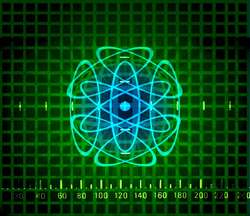Credit: Thinkstock
Neutrinos are neutral elementary particles created by nuclear reactions such as those in our Sun and other stars. EU researchers sought to advance our understanding of their interactions in deep space with new mathematical models and signal detection methods.
Neutrinos have a long scientific history. The neutrino’s existence was first postulated in 1930 but not demonstrated experimentally until nearly 25 years later. Soon thereafter, scientists demonstrated the existence of more than one type of neutrino. These neutrino ‘flavors’ are now referred to as electron neutrinos, muon neutrinos and tau neutrinos.
Subsequently, researchers found experimentally that the number of electron neutrinos arriving from the Sun was less than that predicted theoretically. The discovery of neutrino oscillations, a quantum mechanical phenomenon, explained this discrepancy and, surprisingly, implied that neutrinos do in fact have mass. With a small amount of mass, neutrinos could oscillate among the three different flavours as they travelled through space.
The flavor of a neutrino at any given time is predicted mathematically by probability distributions. Recently, several observed anomalies have suggested a new realm of astrophysics.
European researchers initiated the ‘Theory and astrophysical applications of neutrino flavor evolution’ (Neutrino Evolution) project to use probability densities (a Boltzmann kinetic equation) in order to capture important information about the effect of oscillations and the refractive effect of background medium and collisions.
Such insight will be important in understanding astrophysical phenomena such as dark matter annihilations and emission of neutrinos from collapsed supernovae leading to theories about the early Universe.
Neutrino Evolution scientists developed theoretical models used to study neutrino flavour evolution based on innovative new physics. The freely available software is currently being modified to expand its applicability.
Further work greatly enhanced the possibility of detecting neutrinos from dark matter annihilations in the Sun invaluable to development of dark matter models.
Continuing research extends previous experiments and attempts to address new questions raised by project developments. With EU funding to top European scientists, some of the mysteries of the Universe may not be so mysterious in the near future.
Provided by CORDIS





















